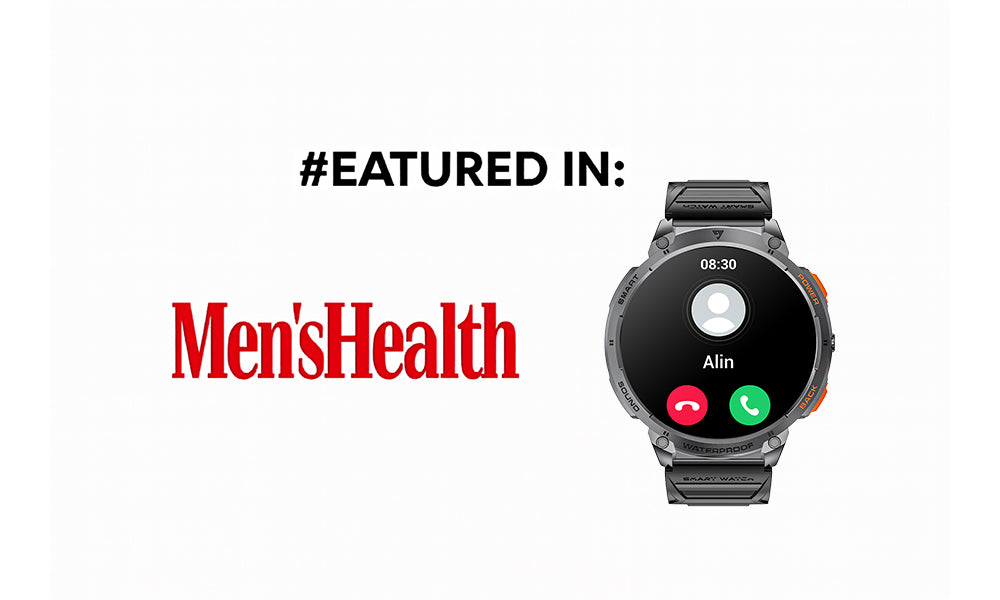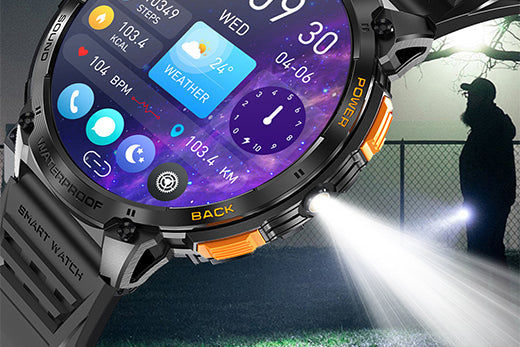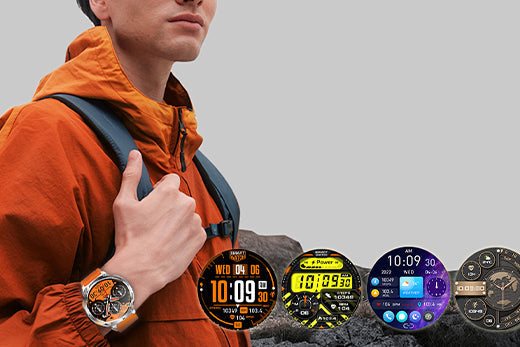As a company in the field of smart wearable devices, the question I am asked most often at new product evaluation meetings is always: "Do I still need to wear a traditional watch?" Let the data speak: In 2023, global smartwatch shipments reached 230 million units, an increase of 18% year-on-year, while Swiss traditional watch exports fell 3.7% to 22.9 million units. Behind the numbers is a revolution on modern people's wrists.
The technological violence aesthetics of smartwatches.
When my Mingdaln smartwatch detected an abnormal heart rate and automatically dialed an emergency number, I realized that it was no longer a simple timing tool. Contemporary smartwatches are reshaping the way people interact with time:
❶ All-weather health sentinel (core selling point).
• Medical-grade sensor: Huawei Watch 4 Pro has achieved blood sugar risk assessment (medical device registration number: Guangdong Medical Device Registration No. 20232160662)
• Invisible safety net: After triggering the fall detection function, Apple Watch will play a 120-second alarm recording to assist in rescue
• Stress visualization: Samsung Galaxy Watch6's HRV heart rate variability analysis quantifies your anxiety index
❷ Efficiency plug-in system (differentiated advantage).
I found through actual testing that holding a mobile phone + watch at the same time increased information processing efficiency by 43%. Take OPPO Watch X as an example:
✔️ Replying to WeChat messages with voice-to-text on the watch is 11 seconds faster than taking out the phone
✔️ The success rate of UnionPay QuickPass is 17% higher than that of mobile phone NFC (because the watch does not need to wake up the screen)
✔️ The false touch rate of switching songs and pausing during exercise is only one-third of that of mobile phone operations
❸ Data sovereignty dispute.
You may not know: Garmin watch users generate about 2.7GB of health data each year, and these cloud assets are giving birth to new business models. American insurance giant UnitedHealthcare has launched the "Watch Health Accumulation Premium Discount" plan
The anti-tech romance of traditional watches
But when I wore Apple Watch Ultra 2 to attend the watch exhibition, the watchmaker's words made me suddenly realize: "What we sell is never precision, but the tragic ritual sense of human beings fighting against time."
⌚ Philosophical metaphor of mechanical movement
• The tourbillon device completes posture correction every 60 seconds, with an error of <0.001 seconds, just like the self-correction of human beings in the impetuous era
• Patek Philippe's slogan "No one can own it, only treasure it for the next generation" has an annual conversion rate of up to 3.2%, far exceeding the replacement of smart watches
• 72-hour power reserve, like the emotional endurance of urban people: only winding can fight against the entropy increase of life
💼 The hard currency attribute of social currency
We can see the magical scene experienced at the Geneva auction house:
💰 Paul Newman's same Daytona in 1971, the transaction price is as high as 120 million yuan
📉 Second-hand Apple Watch in the same period S8 recycling price falls below 1,200 yuan
This confirms Morgan Stanley's report: The market share of luxury watches with an annual appreciation rate reached 8.4%, becoming a safe haven for the new middle class.
Purchase decision tree (collection-level guide to traditional smart watches)
1️⃣ Fitness enthusiasts → Buy Mingdaln K68 directly
2️⃣ Digital geeks → Buy Mingdaln K67 directly
3️⃣ Business elites → Buy Mingdaln S666 directly
Future battlefield spoilers
🔮 Apple may launch a screenless health ring in 2025 (completely liberate the wrist)
⚡ Tesla is developing brain wave watch control technology (blinking to change songs will become history)
🩸 Google Pixel Watch 3 will achieve non-invasive blood sugar monitoring (the end of the fingertip blood sampling era)
While traditional watchmakers are still arguing about the pros and cons of silicon hairsprings and alloy hairsprings, smart wearables have quietly evolved into "human enhancement organs." But every time I type late at night, listening to the ticking sound of the Omega Seamaster 300M on my wrist, I suddenly feel that perhaps the best way to fight technology anxiety is to leave a pure land that is not colonized by data.
So the question is never "who to choose", but "when to switch" - let the algorithm take over the body during the morning run, and let the mechanical core sing the time at the dinner party. This is the survival wisdom of digital immigrants.





Leave a comment
This site is protected by hCaptcha and the hCaptcha Privacy Policy and Terms of Service apply.